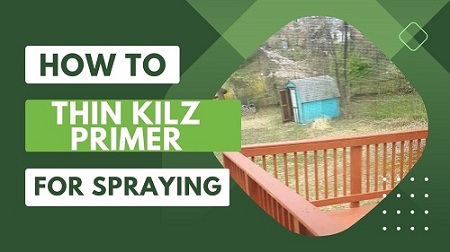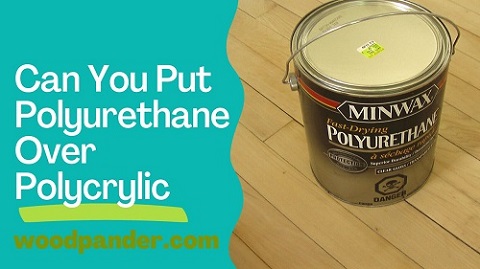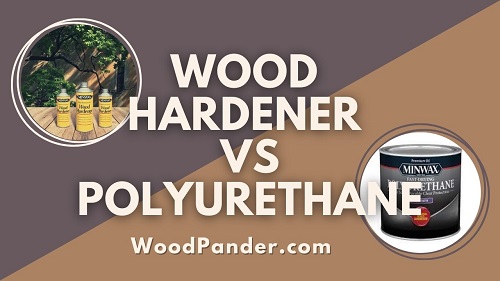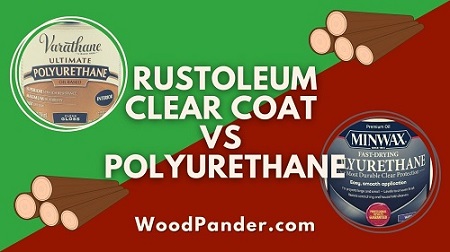You might have just finished your grouting. However, you would like to coat the grout with water based polyurethane. But you think it’s quite dense.
So, your concern is, how to thin water based polyurethane?
First of all, you can try thinning with Floetrol. Besides that, you would also like to try on paint thinner. However, if you’re using paint thinner, you need to be careful about its properties. Lastly, you can follow one of the simplest methods. That method is just adding water to your polyurethane.
This information is surely not enough for you. So, make sure to read along for the main part!
Sounds good? Let’s just get into it then!
Why Should You Thin Water Based Polyurethane?
Water-based polyurethane should be thinned for a variety of reasons. One of the reasons is to enable it to be used in an HVLP spray gun. For optimal spraying outcomes, most spray guns require thinning.
Your brush will slide more smoothly this way. Thus, you won’t have a roughly brushed finish.
Another common reason for thinning water-based polyurethane is making it look natural. That is, it would look quite natural when you apply it to the grout.
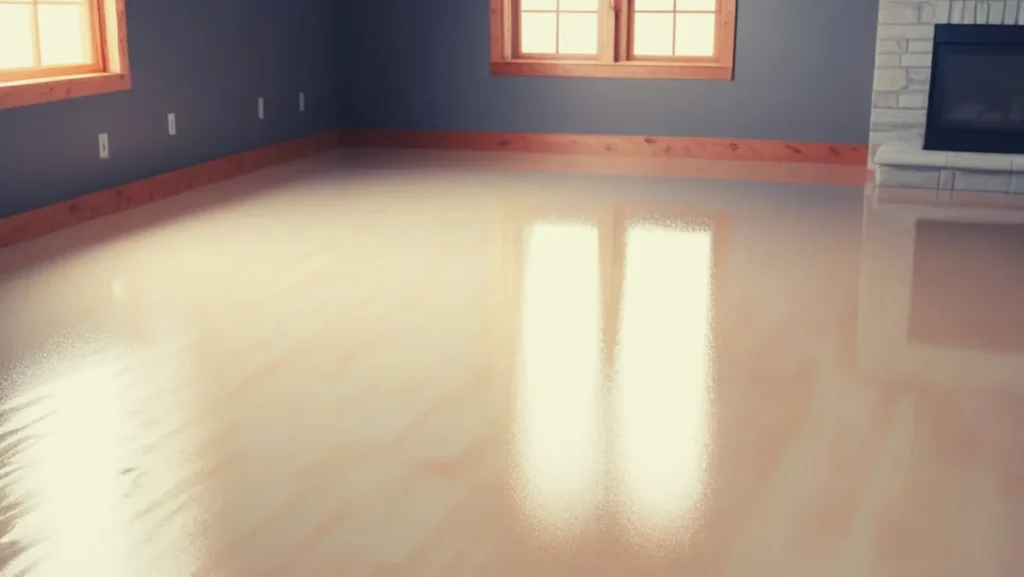
How To Thin Water Based Polyurethane
Well, you’ve already got to know a brief about the methods. However, you need to go through the description of the method to implement them properly.
So, without any further due, we’re going to the main part, discussed below-
Method 1: Thinning Water Based Polyurethane with Floetrol
A lot of people ask “Can I thin water based polyurethane with Floetrol?”
Yes, you are capable of doing the task. To do so, first, you need to mix Floetrol with your water based polyurethane. Make sure to add a water maximum of 10% in amount. Don’t add any more than that. Because adding more than that would completely spoil your polyurethane.
Then stir and mix it properly. It would make the polyurethane have a better flow during the application.
However, an important point must be added to it! We know that Floetrol can be used to thin water-based polyurethane. Your water-based poly, on the other hand, might turn yellow with time. This happens especially if you add more Floetrol than required.
Method 2: Using Paint Thinner to Thin Water Based Polyurethane
Now, you may ask how to thin water based polyurethane for spraying?
You can do it using paint thinners! Paint thinners can be created from a wide range of materials. However, they could have a variety of odors and toxicity levels. As a result, be sure the paint thinner you buy is compatible with polyurethane goods.
So, to begin with paint thinner, you need to make up the polyurethane first. At first, a clean stirring stick is required. Then, with the stirring stick, slowly mix the polyurethane in a figure-eight motion.
Now, coming back to the method again. Make sure to scrape all of the thick material from the can’s bottom. Then whisk the polyurethane until it has a homogenous texture.
An important point must be added. If you shake the can, air bubbles would form. This would result in a less-than-smooth finish in the end.
Anyway, now, add the paint thinner slowly in several batches. Make sure you don’t add it too much. Polyurethane can be added up to 10% of the time. But adding more than that would most likely spoil your water based polyurethane.
Nevertheless, you can still use it to thin your water based polyurethane with no worries!
Method 3: Adding Water to The Water Based Polyurethane
A lot of people ask how to thin water based polyurethane for wiping?
So, here’s how you can do it using water. This is the simplest method to follow.
However, this might not be followed by everyone. Because this doesn’t seem to be effectively workable to everyone. Moreover, adding water might also deteriorate the quality according to some people.
Nevertheless, you might still want to know about this method. So, all you need to do is just add water to your water based polyurethane. Do it before you apply the polyurethane. Make sure that you don’t add more than 10% of it. Finally, stir the mixture properly.
Extra tip: Water can be used to thin any water-based substance, including finishes and paints. When using a brush to apply water-based polyurethane, remember to thin it out. You’ll have more time until it dries if you do it this way.
Method 4: Using Mineral Spirits
Step 1: Prepare the Polyurethane
Pour the desired amount of water-based polyurethane into a clean container.
Step 2: Add Mineral Spirits
Add mineral spirits to the polyurethane gradually. Start with a small amount and mix it thoroughly before adding more. Follow the manufacturer’s recommendations for the appropriate ratio of mineral spirits to polyurethane.
Step 3: Stir Well
Use a stir stick or paint stirrer to mix the mineral spirits and polyurethane thoroughly. Stir in one direction to avoid introducing air bubbles. Continue stirring until the mixture reaches the desired consistency.
Method 5: Using a Specific Thinning Agent
Step 1: Identify a Suitable Thinning Agent
Certain brands offer specific thinning agents formulated for their water-based polyurethane products. Identify a suitable thinning agent based on the brand and product recommendations.
Step 2: Follow Manufacturer’s Instructions
Follow the manufacturer’s instructions on how to use the specific thinning agent. The instructions may vary depending on the brand and product. Ensure that you measure and mix the thinning agent as directed.
So, these are the techniques for thinned water-based polyurethane.
Tips to Thinning Polyurethane
Thinning polyurethane can be a delicate process that requires attention to detail and careful consideration. To ensure optimal results, here are two important tips to keep in mind when thinning polyurethane.
Work Only in a Well Ventilated Area:
When thinning polyurethane, it is crucial to work in a well-ventilated area. Polyurethane contains volatile organic compounds (VOCs) that can be harmful if inhaled in high concentrations.
These compounds can cause respiratory irritation and other health issues. To protect yourself, open windows and doors to allow for proper airflow. If possible, use fans or wear a respirator to further minimize exposure to the fumes.
By working in a well-ventilated area, you can ensure your safety and create a more comfortable working environment.
Always Apply Thinner Sparingly:
When adding a thinner to polyurethane, it is important to start with a small amount and gradually add more if needed.
Adding too much thinner at once can result in an overly thin consistency, which may affect the performance and durability of the polyurethane.
By applying thinner sparingly, you can maintain better control over the thinning process and achieve the desired consistency without compromising the quality of the finish.
Remember, it is easier to add more thinner later if needed than to reverse the process and thicken the polyurethane.
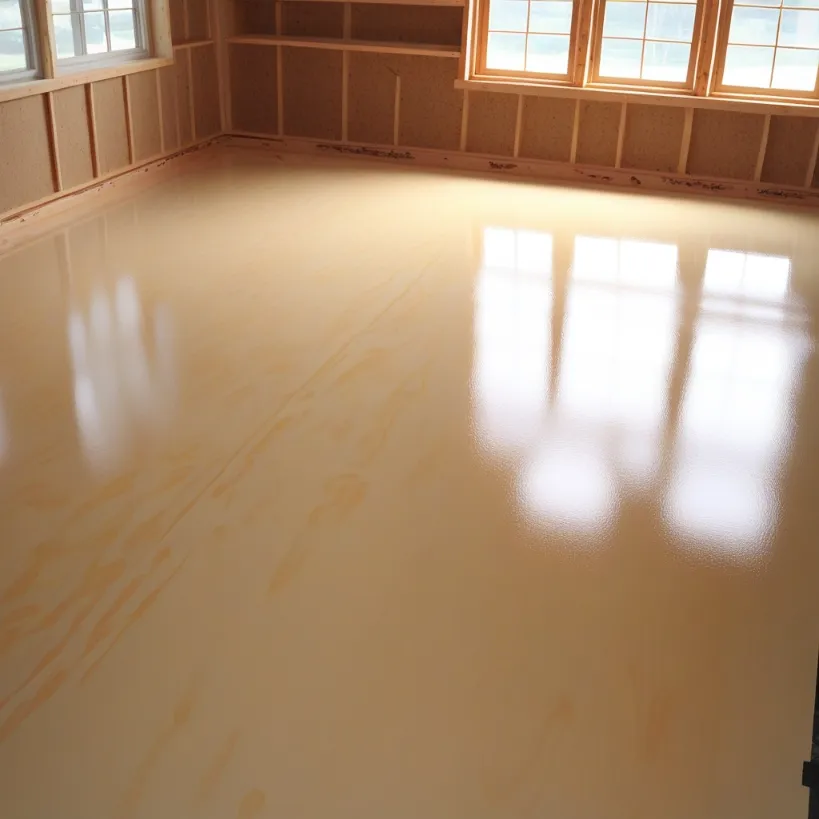
How to Thin Polyurethane – Oil Based
Thinning oil-based polyurethane is a crucial step in achieving a smooth and professional finish on your wood surfaces. By following these simple steps, you can ensure that your polyurethane is properly thinned and ready for application.
Materials Needed
Before you begin thinning your polyurethane, gather the following materials:
Clean the Glass Jar
Start by cleaning a glass jar that is large enough to hold the amount of polyurethane you need for your project. It’s important to use a glass jar because some solvents can react with plastic containers. Make sure the jar is clean and free from any residue or contaminants.
Pour the Polyurethane
Carefully pour the desired amount of oil-based polyurethane into the glass jar. It’s important to only pour the amount you need to avoid wasting any excess polyurethane.
Add the Solvent
Next, add the appropriate solvent to the polyurethane. The type of solvent you use will depend on the specific product you are working with.
Common solvents for thinning oil-based polyurethane include mineral spirits, paint thinner, or turpentine. Refer to the manufacturer’s instructions or consult with a professional to determine the correct solvent for your polyurethane.
Add the solvent gradually, starting with a small amount. You can always add more if needed, but adding too much solvent can result in over-thinning the polyurethane, affecting its performance and durability.
Stir
Using a stir stick or a clean brush, thoroughly mix the polyurethane and solvent together. Make sure to stir gently but consistently to ensure that the two substances are well combined. This will help to achieve a consistent and even consistency throughout the mixture.
Test the Polyurethane
Before applying the thinned polyurethane to your wood surface, it’s important to conduct a test.
Apply a small amount of the thinned polyurethane to a scrap piece of wood or an inconspicuous area of your project. This will allow you to assess the consistency and coverage of the thinned polyurethane before committing to the entire surface.
Observe how the thinned polyurethane spreads and levels on the test area. If it appears too thick or leaves brush marks, you may need to add more solvent and repeat the stirring process.
On the other hand, if the polyurethane appears too thin or runs easily, you may need to add more polyurethane to achieve the desired consistency.
Apply the Polyurethane Finish
Once you are satisfied with the consistency of the thinned polyurethane, you can proceed with the application. Use a high-quality brush or a lint-free cloth to apply the polyurethane to your wood surface. Apply thin, even coats, following the grain of the wood.
Allow each coat to dry completely before applying additional coats. This will help to ensure a smooth and durable finish. If necessary, lightly sand between coats to remove any imperfections or brush marks.
Remember to clean your brush or cloth thoroughly with the appropriate solvent after each use to prevent the polyurethane from drying and hardening on the bristles or fibers.
Do You Need to Thin Oil-Based Poly Before Brushing It On?
Thinning oil-based polyurethane before brushing it on is not always necessary, but it can be beneficial in certain situations. Thinning the polyurethane can help improve its flow and leveling properties, resulting in a smoother and more even finish on your wood surfaces.
One factor to consider when deciding whether to thin oil-based polyurethane is the temperature and humidity of your working environment. In warmer temperatures or high humidity, the polyurethane may dry too quickly, making it difficult to achieve a smooth finish. Thinning the polyurethane can slow down the drying process, allowing it to level out more effectively.
Another consideration is the type of wood you are working with. Some woods, such as porous or open-grain woods, may absorb the polyurethane more quickly, leading to uneven coverage. Thinning the polyurethane can help prevent this issue by allowing it to penetrate the wood more evenly.
If you decide to thin the oil-based polyurethane, follow the steps outlined in the previous section for thinning oil-based polyurethane. Be sure to test the thinned polyurethane on a scrap piece of wood or an inconspicuous area of your project before applying it to the entire surface.
Related Questions
Can water-based varnish be thinned?
Yes you can thin the water-based varnish. You can do it with water. This would improve atomization. The thinning is not the same as lacquer, though. A small amount of water makes a considerably bigger effect on lacquer than lacquer thinner. So start with 5% or less and see how things go.
Can you wipe on polyurethane?
Polyurethane is one of the most popular, long-lasting, and versatile finishes. It's simple to apply, provides good protection, and adds a lovely sheen to the wood. Wipe-on or dry-erase markers can be used for the majority of your job. However, it depends on the project. Brush-on polyurethane can also be used for this.
Can you thin varnish with paint thinner?
Yes, paint thinner can be used to thin varnish, but it's important to check the manufacturer's instructions as some varnishes may require a specific type of thinner.
Can you spray water based polyurethane?
Yes, water-based polyurethane can be sprayed, but make sure to use a sprayer designed for water-based finishes and follow the manufacturer's guidelines for proper application.
How do you make polyurethane thinner?
You can do it with mineral spirits and varnish. Add 3 or 4 parts of varnish to 1 part of mineral spirits The ratio isn't important. You can use a rag to apply these finishes if you want. If that's the case, dilute them with 50 percent mineral spirits.
Which on is the best thinner for polyurethane?
The best thinner for polyurethane depends on the specific product, but generally, water is the recommended and most commonly used option for thinning water-based polyurethane.
Can you thin and spray polyurethane?
Yes, you can thin polyurethane for spraying. Thinning polyurethane allows it to flow more smoothly through a spray gun, resulting in a more even and professional-looking finish. When thinning polyurethane for spraying, it is important to follow the manufacturer's instructions and use the recommended thinning agent, such as mineral spirits or water-based thinners. Thinning polyurethane for spraying can help achieve a smoother and more consistent application.
Can you thin polyurethane with mineral spirits?
Yes, you can thin oil-based polyurethane with mineral spirits. Mineral spirits are commonly used as a thinning agent for oil-based polyurethane. When thinning polyurethane with mineral spirits, it is important to add small amounts at a time and mix thoroughly until you reach the desired consistency. Thinning polyurethane with mineral spirits can help improve its flow and penetration into the wood, resulting in a more even and durable finish.
Does thinned polyurethane dry faster?
Thinned polyurethane may dry faster than unthinned polyurethane, depending on the specific thinning agent used. For example, water-based polyurethane tends to dry faster than oil-based polyurethane. Thinning polyurethane can reduce its viscosity, allowing it to dry more quickly. However, it is important to follow the manufacturer's instructions and allow sufficient drying time between coats, regardless of whether the polyurethane has been thinned or not.
Should polyurethane be thinned?
Whether or not to thin polyurethane depends on the specific project and desired outcome. In general, polyurethane does not need to be thinned for most applications. However, there are instances where thinning can be beneficial, such as when spraying or when working with older or thicker polyurethane. Thinning polyurethane can help improve its flow, leveling, and drying properties, resulting in a smoother and more professional-looking finish.
Can you thin water based polyurethane
Yes, water-based polyurethane can be thinned with water for easier application or to adjust viscosity.
How to Thin Water Based Polyurethane for Spraying?
To thin water-based polyurethane for spraying, gradually add water to the polyurethane while stirring until reaching the desired viscosity suitable for spraying application.
How to Thin Water Based Polyurethane for Wiping?
To thin water-based polyurethane for wiping, gradually add water while stirring until the desired consistency is achieved, ensuring not to exceed the recommended ratio of water to polyurethane to maintain proper adhesion and finish quality.
Now, you know how to thin water based polyurethane! We believe our methods are quite simple and easy to follow.
We would hope you follow our methods. Make sure to get in touch with us for any queries regarding water based polyurethane.

